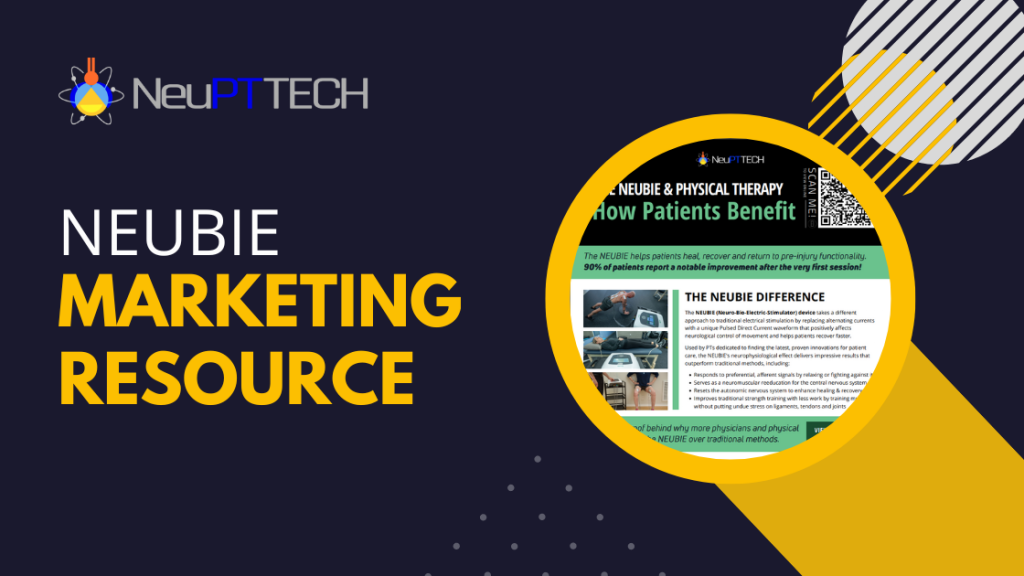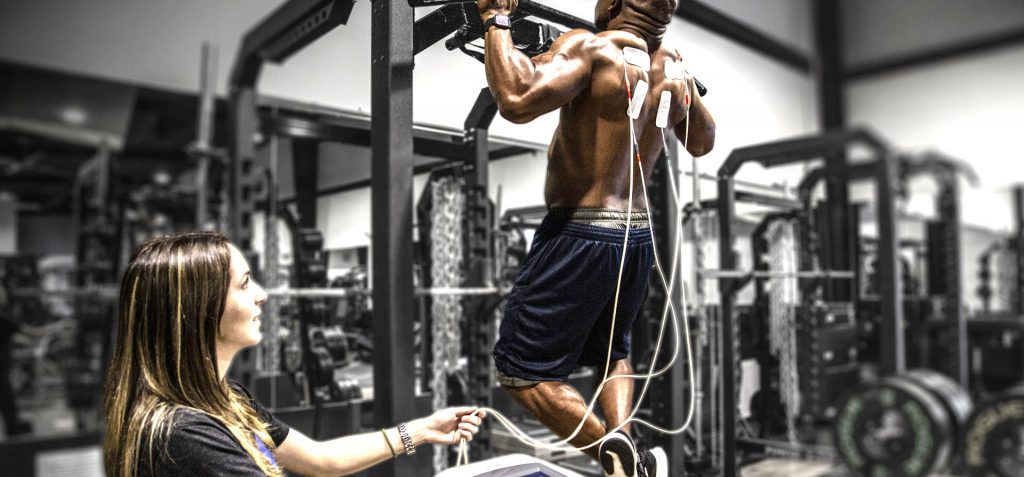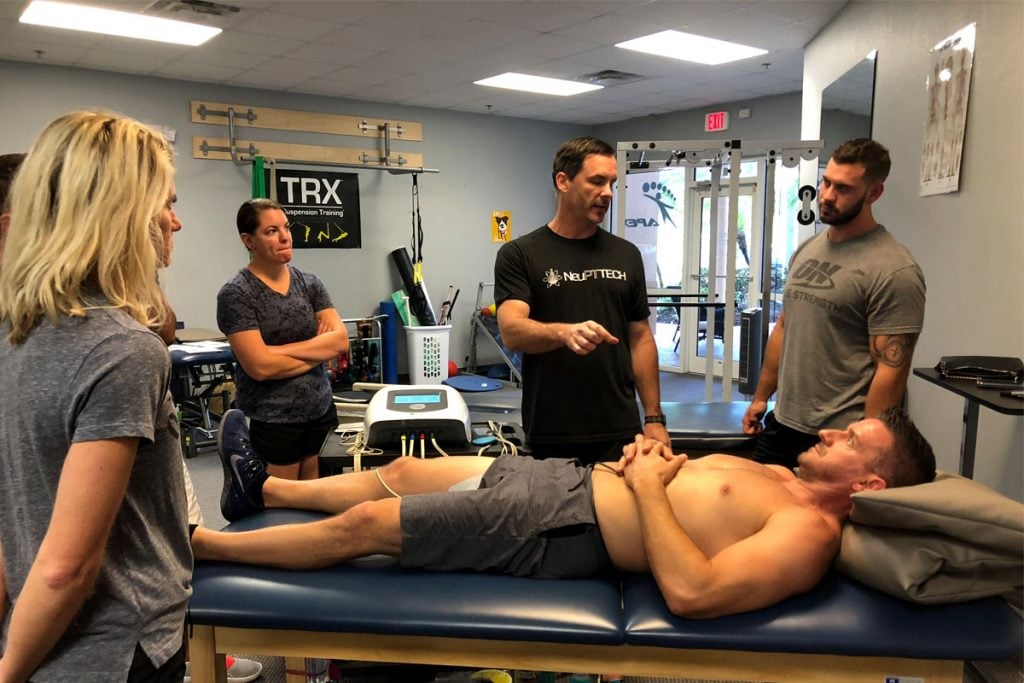
How Does the NEUBIE Work: Therapeutic Reprogramming Process
[This blog is a continuation of our series on how the NEUBIE device works. If you haven’t already, please read “How Does the NEUBIE Work: The Diagnostic Process”.]
The NEUBIE continues to be a game-changer for the private practice due to its unparalleled patient and business outcomes.
To further understand how the NEUBIE works, it’s time to evaluate the therapeutic reprogramming that is discussed in the white paper: “NEUBIE A New Paradigm in Electrical Stimulation” by Garrett Salpeter, Founder of NeuFit and partner of NeuPTtech.
After clinicians have gathered information from the aforementioned diagnostic process, it’s time to use that data to help re-pattern the problematic areas, as NEUBIE stimulation is combined with NeuFit movement protocols.
Understanding NEUBIE’s Therapeutic Reprogramming Process
We’ve found that, by stimulating specific areas identified in the NEUBIE diagnostic process, the patient’s body learns that it can handle greater levels of stimulation on those particular pathways. It learns to better accept that signal and “lift-off” the relevant governors.
After just a few minutes of this process, the patient’s nervous system changes (or is reprogrammed) so that they immediately experience improvements in function. This can include things like greater range of motion and strength output, less pain and enhanced quality of movement with a sense of ease. The improvements occur both within a session and cumulatively over multiple sessions.
“How do we know that these changes are taking place? Simply put, the patient tells us that the discomfort they were feeling and the perceived intensity of the stimulation diminishes notably within the first 3-5 reps of the movement. With the NEUBIE, we’re literally hitting the ever evasive reset button that was hiding deep in the nervous system.”
Jason Waz, Founder of NeuPTtech
Results of NEUBIE Therapeutic Reprogramming
These immediate changes are different from those that usually result from training or rehabilitation. With strength training, for example, the body usually builds new contractile tissue over time. That added muscle tissue improves the ability to generate force. In a session with the NEUBIE, patients often improve strength in a matter of a few minutes. It’s an impossibly short amount of time for the body to build new muscle, so it’s clear there’s a different mechanism at play.
What we’ve found is that the body is simply learning to activate more of the muscle that was already there, previously dormant. There was a change in the mechanism that was governing muscle output – now, more muscle can be engaged at one time. In the end, the patient displays greater strength.
Throughout the NEUBIE’s therapeutic reprogramming, a similar dynamic occurs with improvements in range of motion.
In one session, the body doesn’t have enough time to restructure its tissues to gain more length in those physical structures. Rather, it’s learning to relax the tissues that were carrying excessive tension. The tissues that governed the body’s range of motion are now shifted to a different state in which they are permitting the body to move through larger ranges.
One great example of this reprogramming process can be seen in the recovery after ACL reconstruction surgery or total knee arthroplasty (joint replacement).
Post-surgery, the nervous system doesn’t understand that the knee is actually safer and more stable. Instead, it only knows that there was trauma in the knee joint. This triggers the nervous system to prevent any movement of the knee so as not to further irritate the joint that just experienced trauma. The signal, therefore, is one of reduced activation of many knee muscles, especially the quadriceps. In this state, the thigh of the surgical leg will atrophy. Unfortunately, the average loss of thigh muscle (cross- sectional area) is about 40% by the end of the first month after total knee arthroplasty.
In contrast, early case studies using the NEUBIE’s therapeutic reprogramming process have shown an average of only about 10% atrophy.
Since there is so much less atrophy in the early stages of the rehabilitation process, the whole process ends up progressing much faster. Ultimately, NEUBIE users have recovered from both of these surgeries months ahead of the usual schedule.
Get Started with the NEUBIE Today
To request case studies and learn more about how the NEUBIE has benefited the private practice and its patients, contact NeuPTtech today!
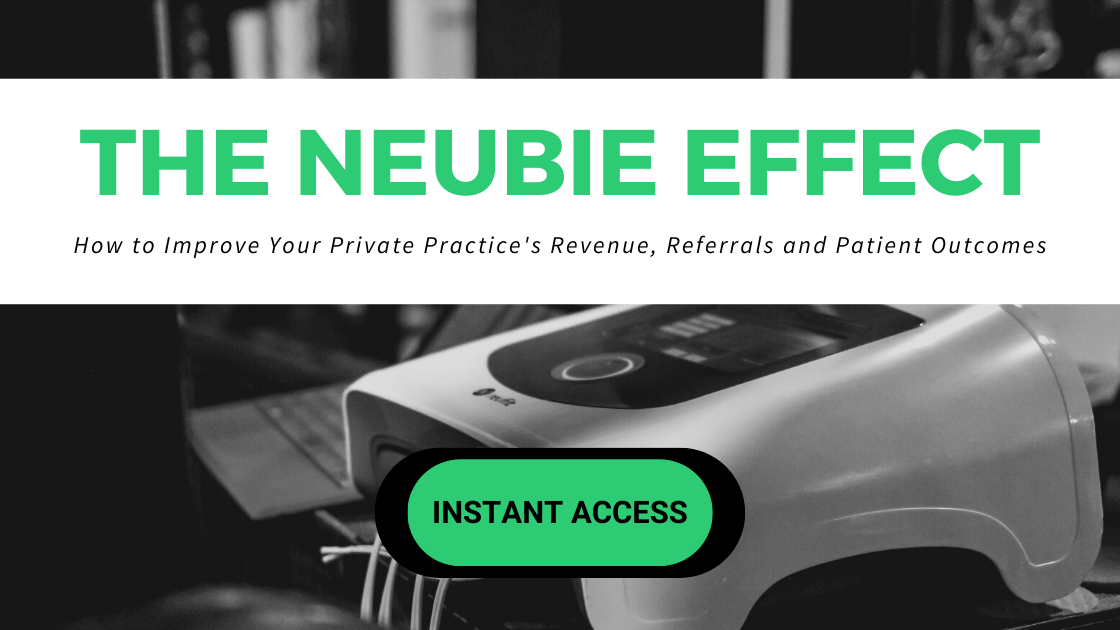
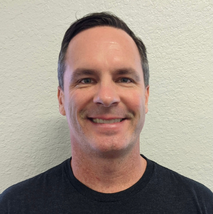
 Previous Post
Previous Post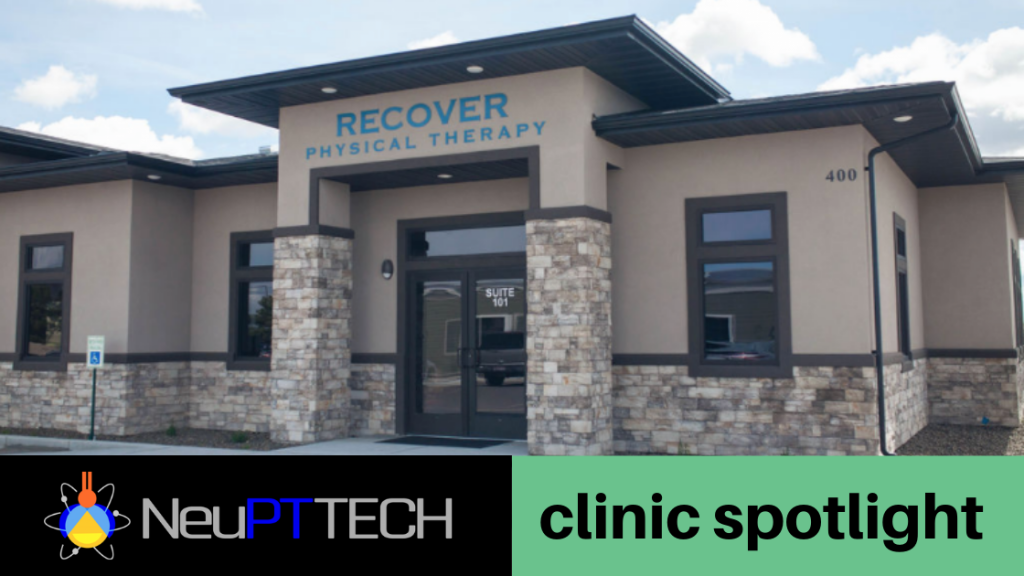 Next Post
Next Post